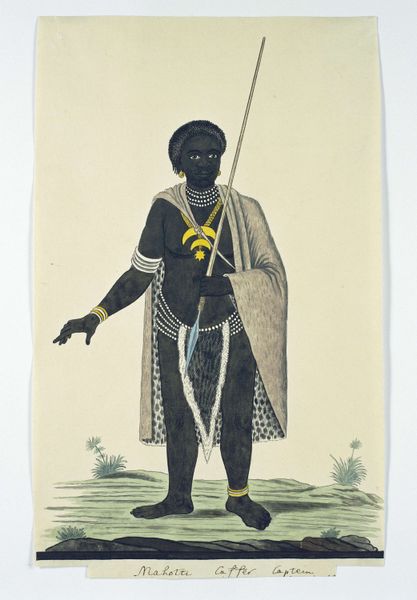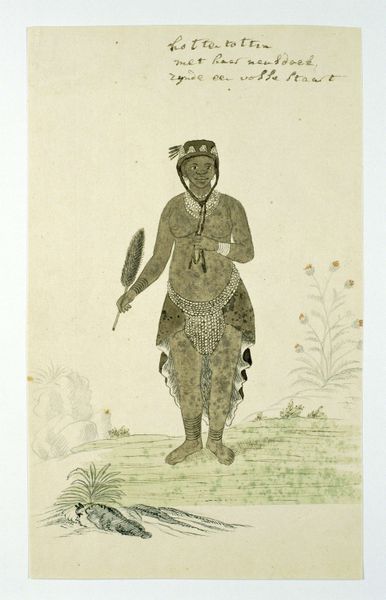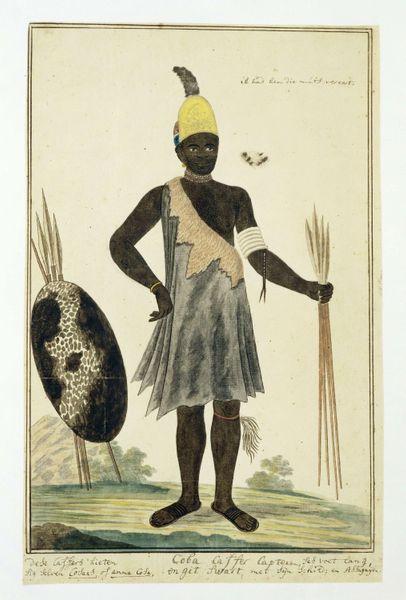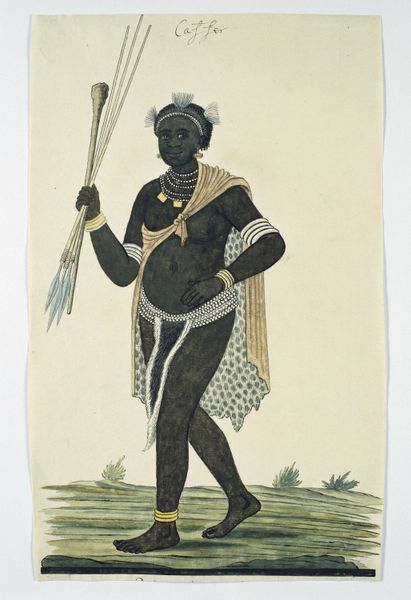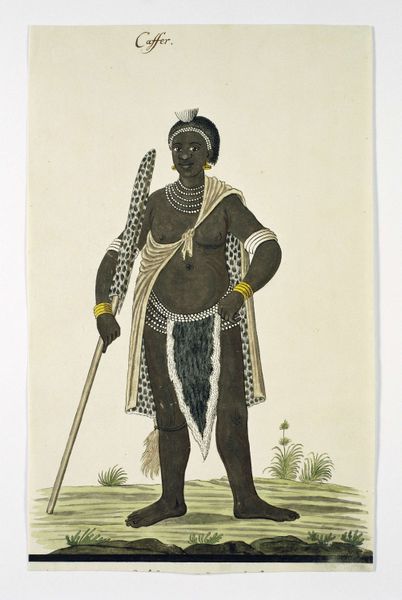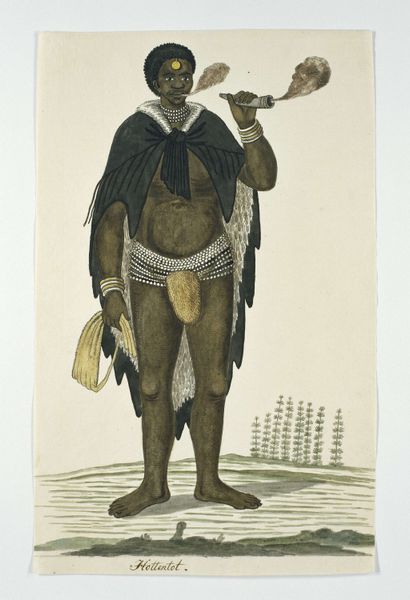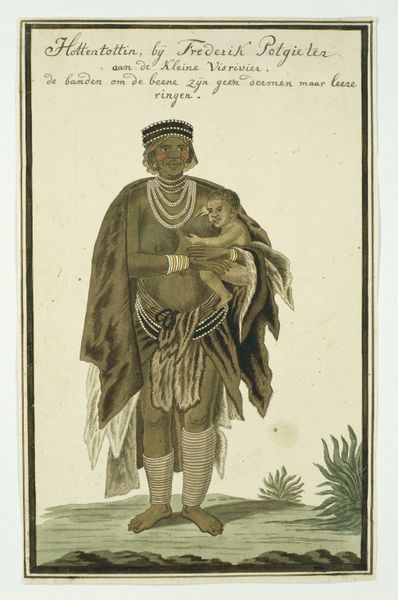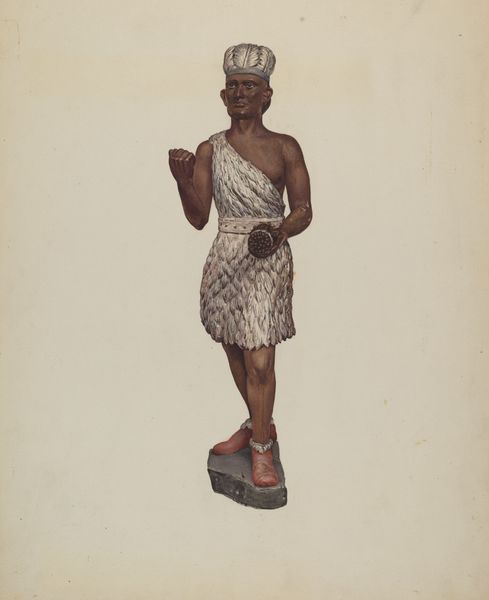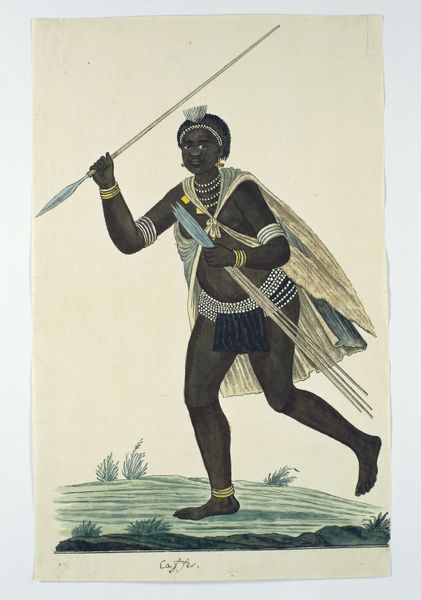
Pusega, daughter of Coba (or Kobé), a chief of the Gqunukhwebe tribe Possibly 1777 - 1778
0:00
0:00
drawing
#
portrait
#
african-art
#
drawing
#
watercolour illustration
Dimensions: height 660 mm, width 480 mm, height 347 mm, width 232 mm, height 309 mm, width 222 mm
Copyright: Rijks Museum: Open Domain
Robert Jacob Gordon made this watercolor drawing of Pusega, daughter of a Gqunukhwebe chief, in the late 18th century. Gordon was a military officer in the Dutch East India Company, and the drawing reflects the cultural and political context of the Cape Colony. The image's power dynamic is complex. On one hand, the detailed rendering and individualized features suggest an attempt to document and understand indigenous people. On the other hand, the inscription reflects a colonial gaze, categorizing Pusega as a ‘Kaffir’, a derogatory term used by Europeans to describe black Africans. This was a period of increasing conflict between colonists and indigenous tribes. By analyzing the visual codes and inscriptions within the framework of colonial history, we can better understand how European artists and institutions shaped perceptions of indigenous people. Accessing historical documents like the journals and letters of colonial officials, missionaries, and settlers is crucial in deconstructing the colonial narrative. Ultimately, the meaning of this artwork lies in understanding the complicated social and institutional context.
Comments
No comments
Be the first to comment and join the conversation on the ultimate creative platform.
